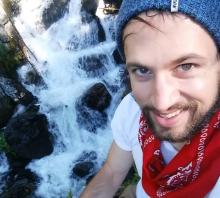A large portion of the U.S. receives its fresh water from spring snowmelt in the Rocky Mountains. Hydrologic modeling in complex alpine systems is difficult, but it helps us understand and manage critical freshwater resources. Groundwater-dependent ecosystems (GDEs) are important surface expressions for understanding hydrologic processes. They are critical ecosystems that support wildlife populations of the larger ecosystems that they are a part of. Because of their importance, the National Forest Service is compiling a nationwide inventory of GDEs. Forest service researchers currently use USGS topographic maps to locate these ecosystems. Site visits then verify initial identification. It can take research teams hours to reach one site, often to find that it is not a GDE. The goal of this research was to create a model for mapping GDEs in alpine forests of the Western United States using GIS. I used data from the Medicine Bow National Forest to develop this model, because of my prior experience with mapping GDEs in this area. I used Landsat 8 imagery processed using NDVI and Maximum Likelihood classification with field-obtained reference sites to determine likely GDE locations. I also used a LiDAR-derived digital elevation model. These data were processed using Compound Topography Index, and using various filtering techniques with raster algebra to identify morphological features. Radar data was not available in the selected area, but its effectiveness was explored in similar areas. The resulting model could make ongoing and future research in alpine groundwater-dependent ecosystems more efficient.
After an internship with the US Forest Service, I realized the need for geospatial research in identifying groundwater-dependent ecosystems. I consulted with a faculty member with regards to data acquisition, and she recommended that I do a directed independent study. We later applied and were approved for SURCA funding.
I gained fluency in several computer programs including ArcGIS and ENVI. I learned how to efficiently acquire data for geospatial research. I gained confidence in conducting research and meeting deadlines. My writing proficiency has improved under the supervision of my faculty mentor, Dr. Narcisa Pricope. Applied learning made possible by CSURF and ETEAL through SURCA funding has been the highlight of my education.
The competitive schools and employers that I am considering applying with in the coming year receive applications from more students with high GRE scores and GPAs than they have room for. My experience with applied learning beyond the classroom is unique. Very few of my peers have extensive applied learning experience, including conducting research, field work, technical writing, and presenting at large conferences. By the time I graduate in the Summer of 2017 I will have a great chance to be admitted to any school that I apply to, and I will have job opportunities that recent graduates with similar degrees cannot compete for.





